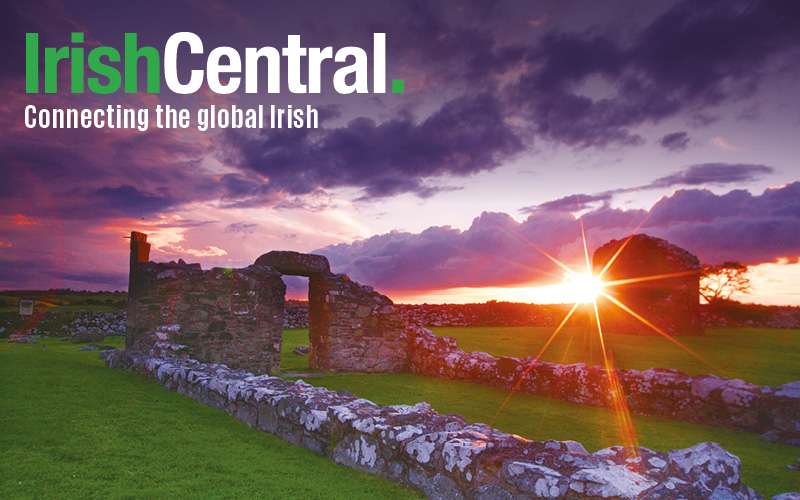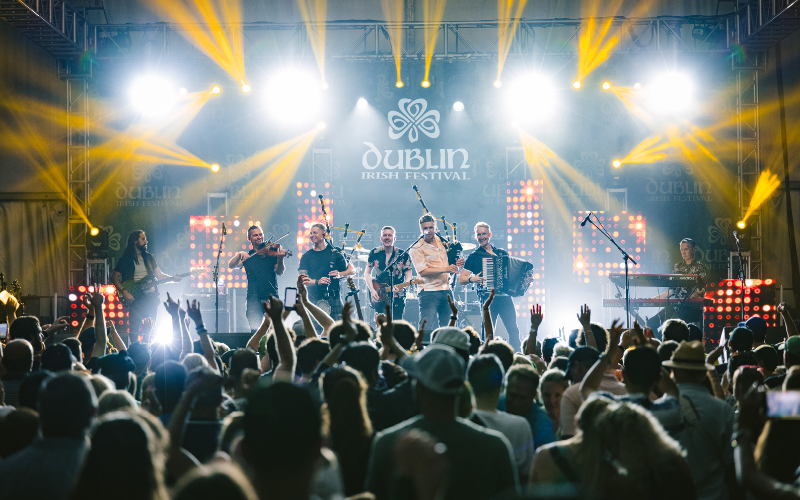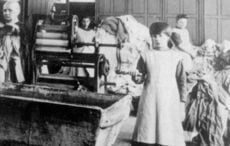- News / Top ten places to celebrate Christmas in Ireland / Click here
- Photo gallery / The top 10 Irish Christmas traditions / Click here
One time of the year seems to bring out the carnival spirit in the Irish more than any other: the seven short days between Christmas and New Years. If you’re a first time visitor to the country you’ll be amazed by the hectic social round of parties, gatherings, rituals and dances that mark this week in the Irish calendar.
Of course, this being Ireland, there are centuries old Irish traditions to follow too, if you want to spend your Christmas like a local, that is. Here’s Irish Central’s list of 10 Irish Christmas Traditions that will give your gathering a distinctly Celtic atmosphere no matter where you celebrate it this year.
1. The Unwanted Sweater
The first portent of an Irish Christmas is the sending of an Unwanted Sweater. Hand knit and presented in recycled wrapping paper, its arrival heralds Christmas like the first swallow heralds spring.
Some people will swear that your old aunty Mary hand knitted it for you but the truth is much more sinister. There is, in fact, only one toweringly terrible hand knitted sweater in the whole of Ireland and it’s passed on in secret from house to house, in the dead of night, by a chain of cackling elderly women until Christmas Day, when it mysteriously vanishes, only to reappear again one year later.
Avoid the unwanted sweater stigma by shopping here instead:
2. The Fashion Melt Down
You know you’re having an authentic Irish Christmas when you witness a full-blown Fashion Melt Down, although most Irish women (and men) have closets that avalanche when you open them, Christmas week is prime time for an annual Fashion Melt Down. Just as there are five stages to Elizabeth Kübler-Ross’s model of grief, there are five distinct stages to an Irish fashion melt down.
Stage 1: Denial. “These Prada boots work with this Lainey Keogh dress, don’t they? Of course they do! Don’t they? I won’t have to buy new things, will I? Well, will I?”
Stage 2: Anger. “I have nothing to wear! Why do I have nothing to wear? Why am I so poor! I look like Susan Boyle! Why did I marry you! I have nothing to wear! It’s Christmas! Waaahhhhhhhh!”
Stage 3: Shopping. “Look at this, there’s ten percent off these brand new Prada Boots! I can wear them with this brand new Lainey Keogh dress! Why are you making faces at me! They do not look the same! Why are you being so unhelpful?”
Stage 4: Elation. “I’m going to knock them all dead in this right off the runway number. Why didn’t we start shopping earlier? Yes, I can see it’s expensive! Oh, live a little, it’s Christmas!”
Stage 5: Disillusionment. “That man in the rumpled suit was my first love, believe it or not, and in my memory no one can touch him. But now he’s fat and bald and drunk and completely full of himself and he didn’t say a word to me all night. I hate Christmas. I really do. It’s a huge waste of money.”
Avoid winter fashion meltdowns by shopping here:
3. The Class Reunion
A truth universally acknowledged is that thousands of Irish emigrants fly home to Ireland at Christmas to spend the holidays with friends and family. That makes it the perfect time for a high school reunion and – despite every instinct you to do otherwise – thousands of Irish people do attend them every year.
Remember how you once made fun of little Annie Moore’s prominent teeth? You don’t? Well she does, boy howdy, and she has the therapist’s bills to prove it. Now her future wellbeing depends upon reminding you of the fact. Do you realize how awful you were? And remember big Rory O’Connor, the strapping hurling star with the shock of red hair that you once doted on? Well he’s gay now and he swears that dating you made him come to terms with the fact (ouch). Merry Christmas! Mine’s a Jameson!
4. The Candle In The Window
Can there be an image of hope and fellowship more simple or affecting than the sight of a candle in the window on Christmas Eve? The Irish place them there on Christmas Eve as a symbol of welcome to Mary and Joseph as they travelled looking for shelter. This being Ireland there’s a historical aspect to the tradition to: the candle also indicated a safe place for priests to perform mass because during Penal Times this was not allowed. A light in the dark, it’s a simple but affecting symbol of hope.
To find out more about Ireland and it’s traditions visit:
http://www.discoverireland.com
5. The Hanukkah Menorah
The Hanukkah Menorah is an eight-branched candelabrum that has been a symbol of Judaism for almost 3000 years. It’s also the emblem of Israel, and was used in the ancient Holy Temple in Jerusalem. In Ireland Menorah’s have become wildly popular window ornaments at Christmas, placed there by unwitting Irish people who have no idea that they’re actually celebrating Hanukkah.
6. The Midnight Mass
Midnight Mass on Christmas Eve is a tradition that marks one of the most joyful occasions in the Catholic calendar – the birth of Christ. But many Irish families will attend this mass just to give themselves time off on Christmas Day to cook, attend parties, visit the relatives or rest up.
This being Ireland, by midnight on Christmas Eve quite a few of the faithful have a few drinks taken before they reach the pews. So in some parishes Midnight Mass is becoming a thing of the past as the sight of reeling drunks and riotous behavior isn’t in keeping with the message of the season. If you’re visiting Ireland try to catch this mass, because it’s a link to the traditions of an older Ireland that seems to be going, if not quite gone with the wind.
7. The Sherry Trifle
Sherry Trifle is a Christmas Day desert to be reckoned with. Served with fresh whipped cream, it will supply you with everything Christmas cooking is all about in one dish: fat, sugar, dairy and alcohol.
People who have grown up outside of Ireland usually consider it an unappetizing gut buster, but the Irish can live for weeks on this stuff. It’ll probably give you a sugar coma and gas, but it’s as authentic a Christmas dish as it gets.
For a good sherry trifle recipe visit:
http://www.ehow.com/how_2108636_make-sherry-trifle.html
8. The Boxing Day Swim
This is an Irish tradition along the Irish coastline, which means almost everywhere, since Ireland is an island nation. On the day after Christmas Days thousands of hearty souls strip down to their bathing suits to take a bracing full body dip in the sea. Don’t expect an episode of Baywatch, though.
There’s something completely reviving about the extremes of heat and cold that accompany this take the plunge experience and that’s why it grows in popularity every year. Be sure to donate to one of the many charities that sponsor these events.
9. The Selection Box
Selection boxes are made up of the best candy bars on sale all thrown together in one box. Cadbury’s sell them, so does Nestle, so does Mars etc. Don’t visit a family with young kids without bringing one if you want to be considered a thoughtful guest.
In fact, don’t go anywhere empty handed in Ireland over Christmas. The worst insult in the Irish catalogue of curses is to be called cheap, tight, jammy bas-ard. Once you’ve been called that it will stick to you and then to your offspring, and then to theirs for seven generations. Avoid this.
For a great selection box visit:
10. The New Years Eve Party
Watch out for these. Irish New Year’s Eve’s can be life-changing experiences. Be prepared for much more than having a good time. It’s the one night of the year when the Irish decide that all bets are off, the gloves come off, and no punches are pulled. It’s also the one night of the year when the hopes and dreams of the previous 364 are vocally expressed (many marriages and divorces are announced within a few week of New Years Day).
Beneath their playful surfaces Irish people are a surprisingly passionate lot. And on New Year’s Eve, with the booze flowing freely, expect to hear them sing, cry, laugh, lament and shout and possibly even tell you they love you. Just don’t expect to hear another word about it until the following year. Now that’s a real Irish Christmas!
To spend New Years Eve with the Irish, visit:




Comments